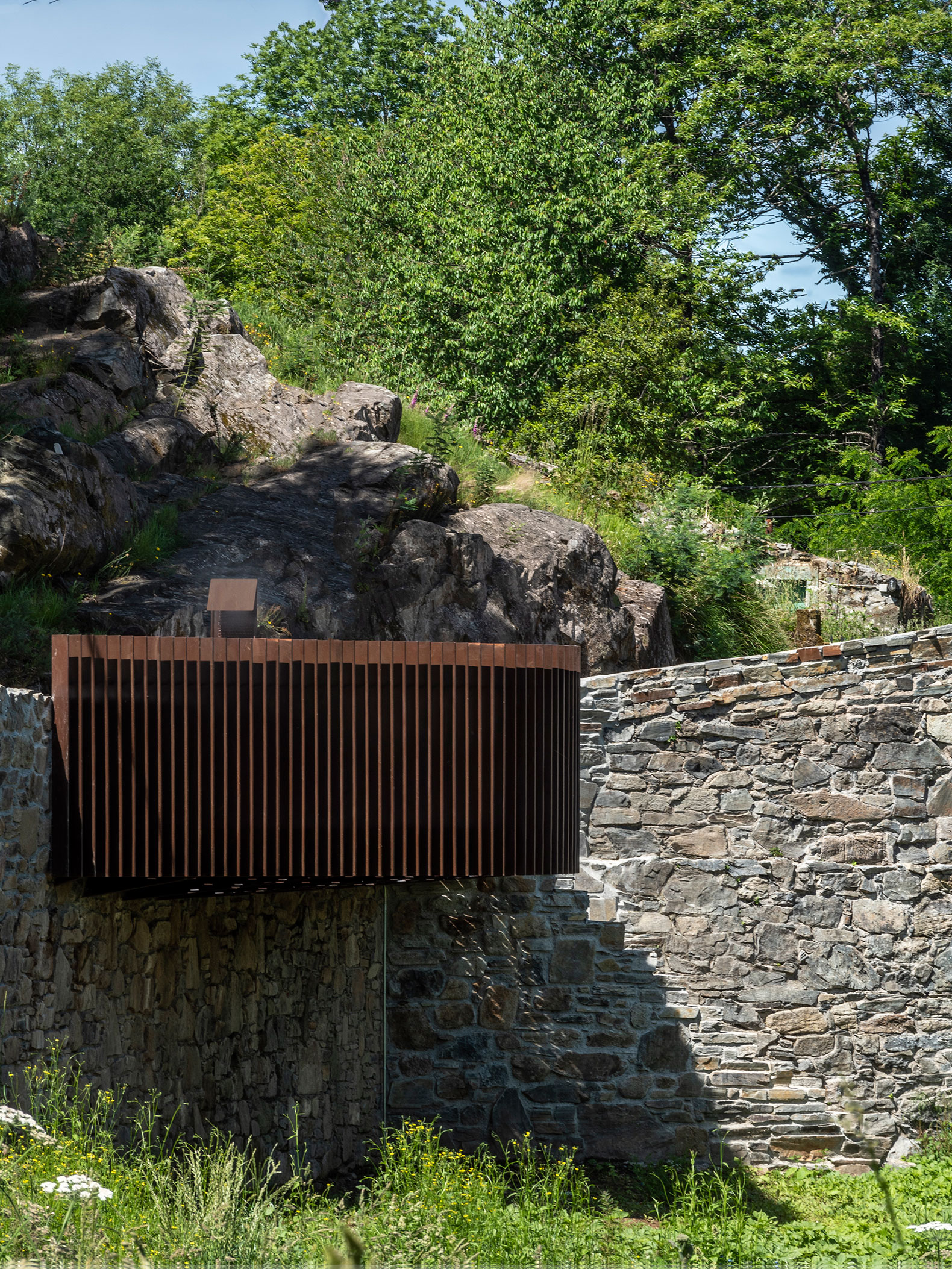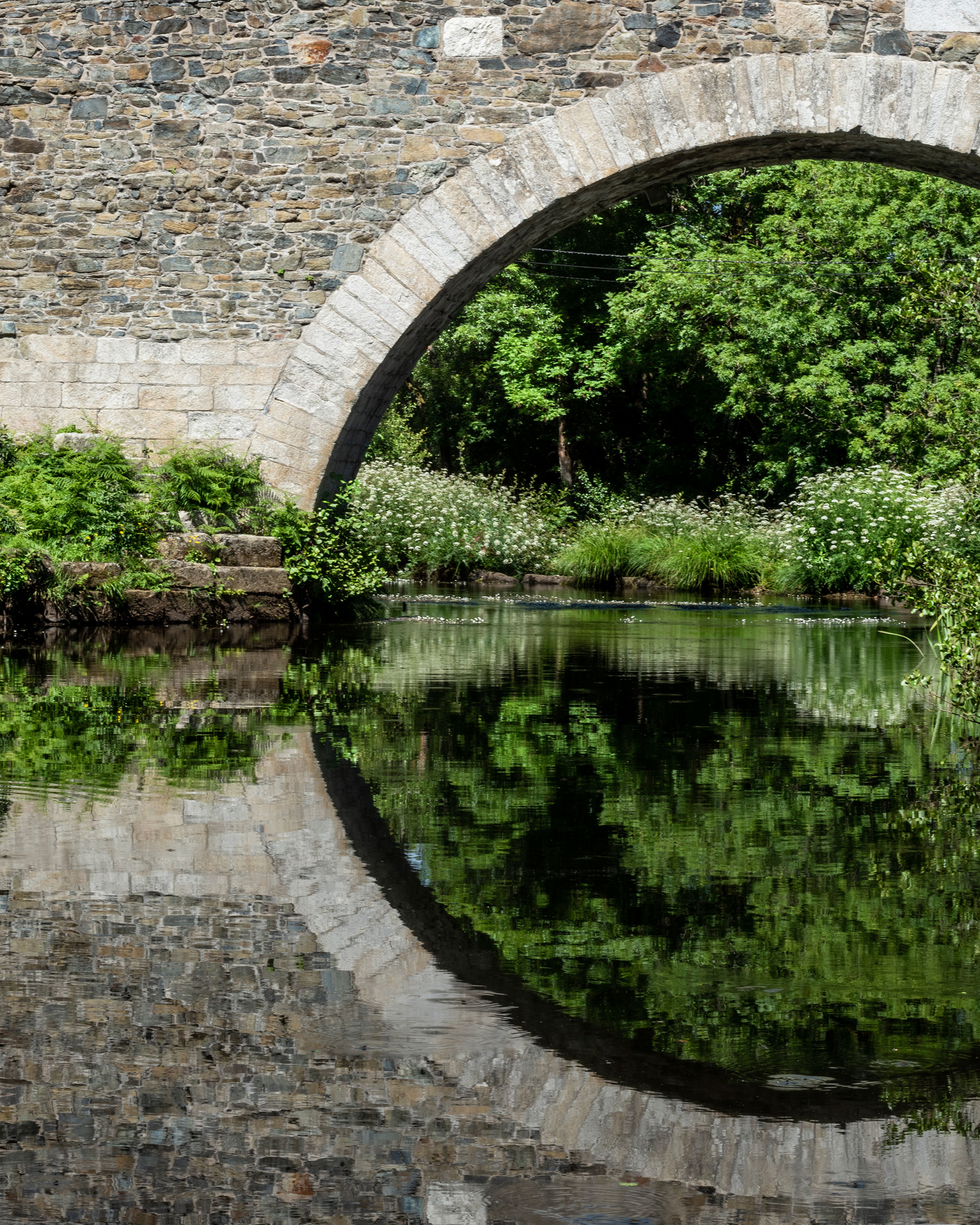About the materials of the Furelos Bridge, the granite ashlar masonry appears in the original structural elements, and to recall the memory of the place, the current granite parapets have been replaced by a gneiss masonry.


Furelos Bridge by AGi Architects. Photography by Héctor Santos-Díez.
Description of project by AGi Architects
The medieval bridge of Furelos is one of the most outstanding works of civil architecture on the Pilgrims' Route to Santiago de Compostela. For this reason, the intervention carried out has been approached from an architectural perspective closely linked to the village of Melide and its landscape, to preserve an important heritage by careful restitution of the memory, applying the appropriate construction techniques.
The human body as a scale of measurement
The project takes into account the phenomenology of perception and the senses: it incorporates certain ways of seeing and feeling linked to the rhythms and relationships of architecture, the body, and the place. Thus, the threshold of the bridge is marked as a reception area for pilgrims; the cadence, rhythm, and frequency of the walker's passage; the demarcation of the keystones, pillars, abutments, and cuttings in the pavement by large stones that show the walker the silhouette of the bridge he is crossing; upstream and downstream observation points before and after, showing the future path that awaits beyond the transit over the bridge and the path that is left behind; the bridge as an element referring to the local experience and memory?
The preservation of memory and the Genius Loci
Among the characteristic aspects of the place is the constructive use of nearby natural resources. Metamorphic rocks are abundant (gneiss, amphibolites, dunites, and serpentinites), which are therefore what defines the traditional architecture of the area. There is no granitic geological substrate in Melide, it comes from the quarries of Pambre (Palas de Rei) and this is reserved exclusively for the supporting elements, such as jambs, lintels, corners, and thresholds.
In the case of the Furelos bridge, the granite ashlar masonry also appears in the original structural elements: abutments, pillars, spurs, cutwaters, and arches, and following the site report, the current granite parapets have been replaced by a large gneiss masonry covering the entire section of the parapet at its crown.
The threshold of the bridge is presented as the reception area for pilgrims. The low retaining wall of the hydrographic margin is extended to form a stone and steel bench that includes a description of the origin of the bridge for walkers.















































